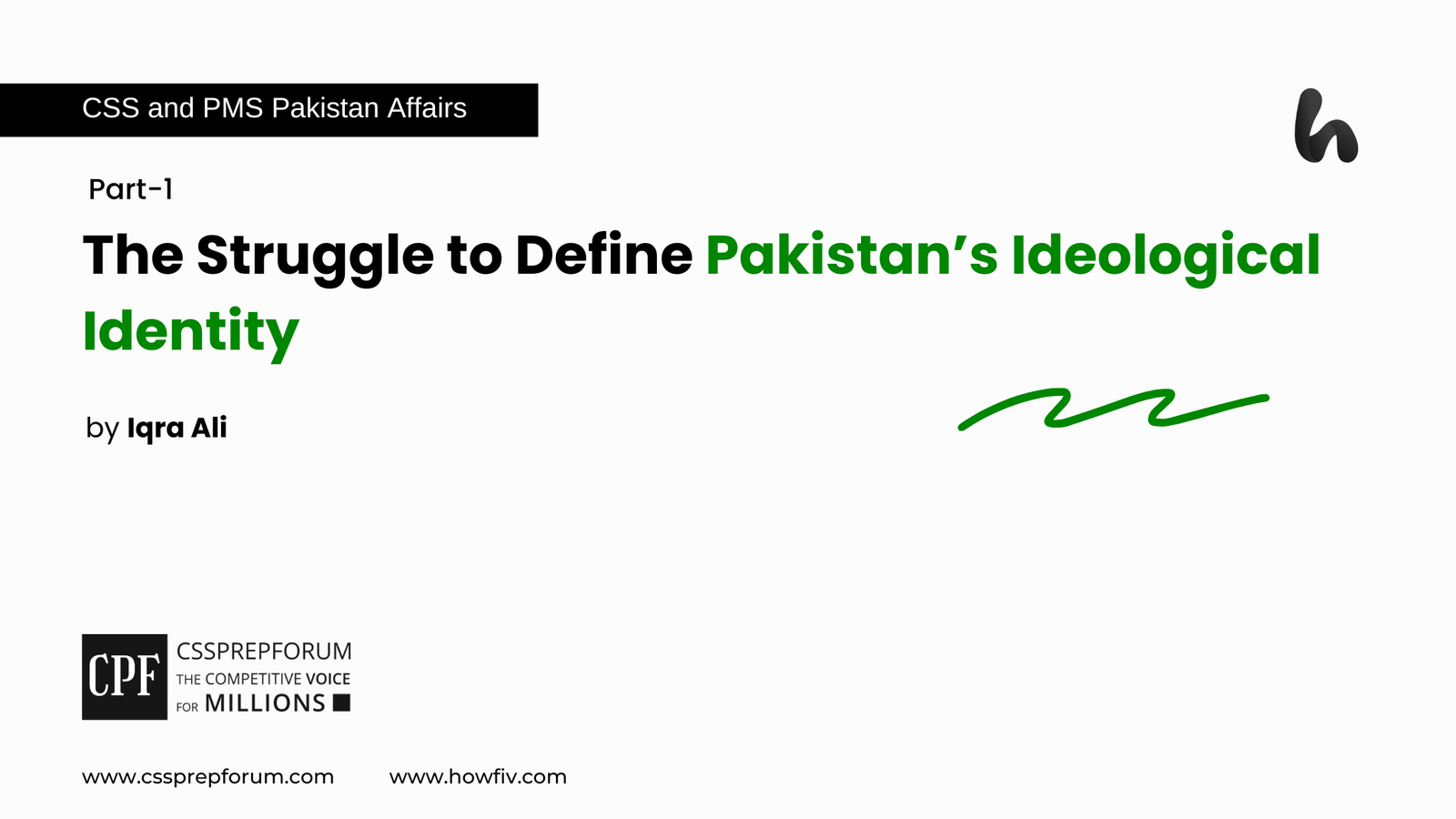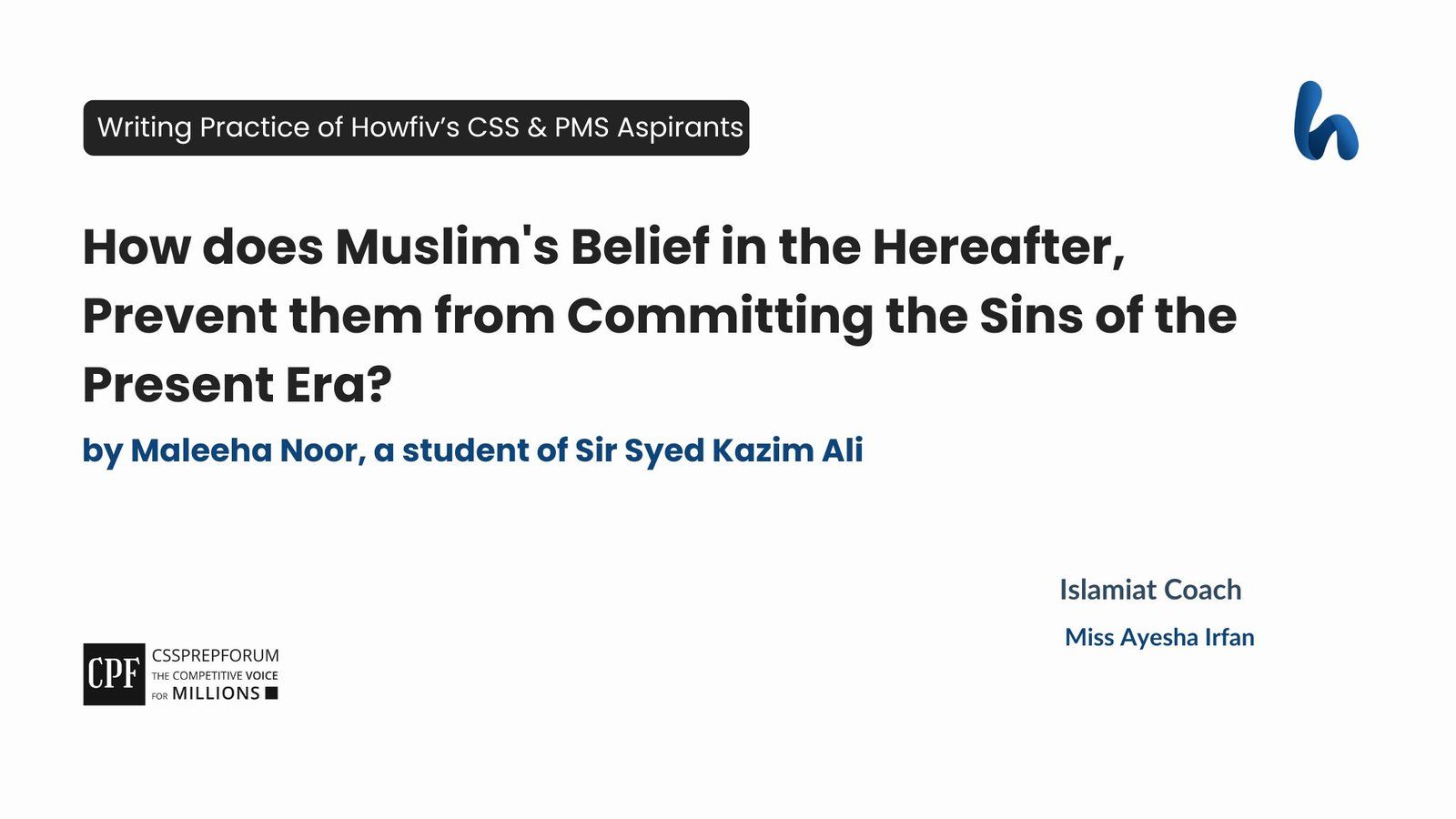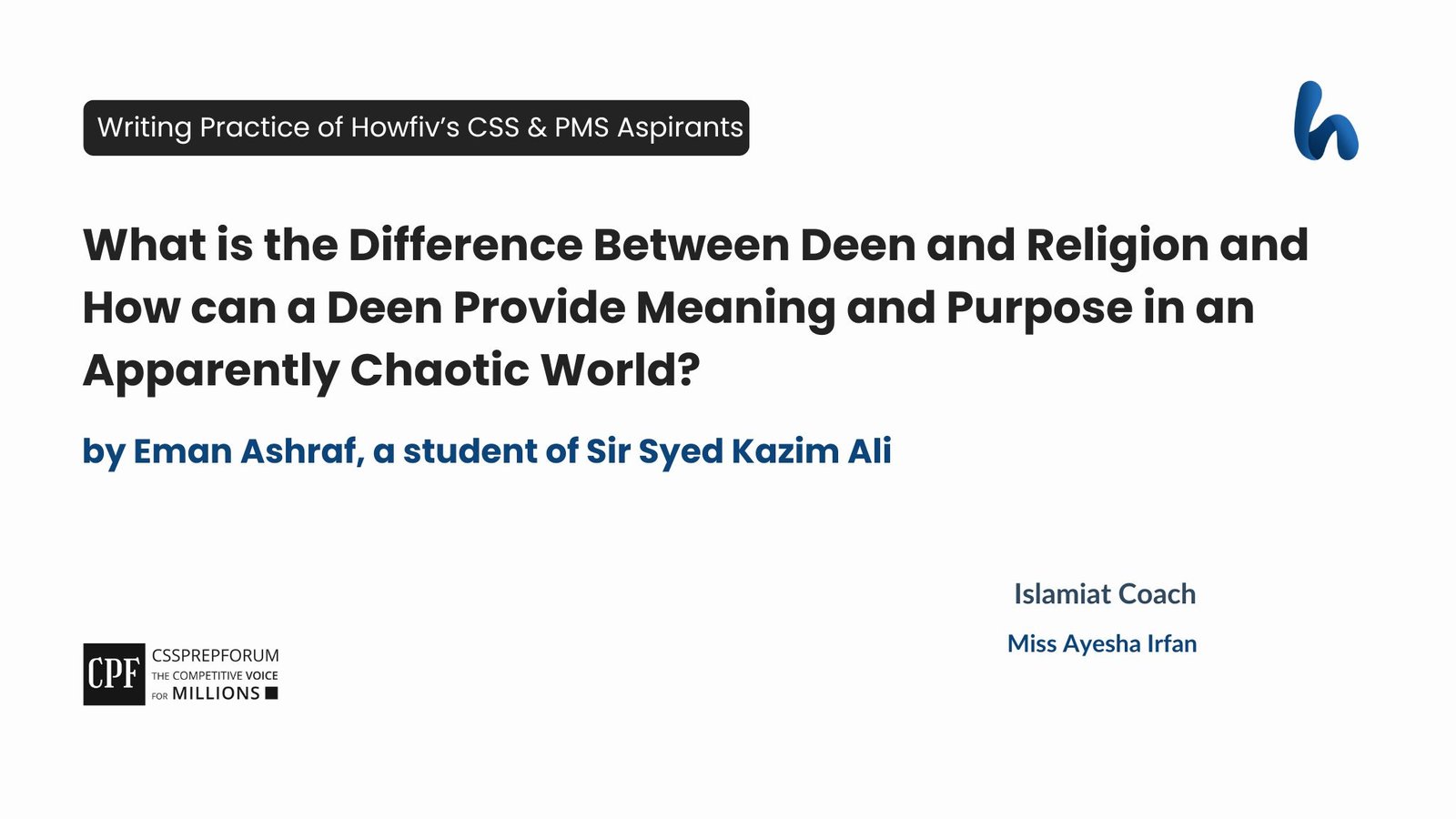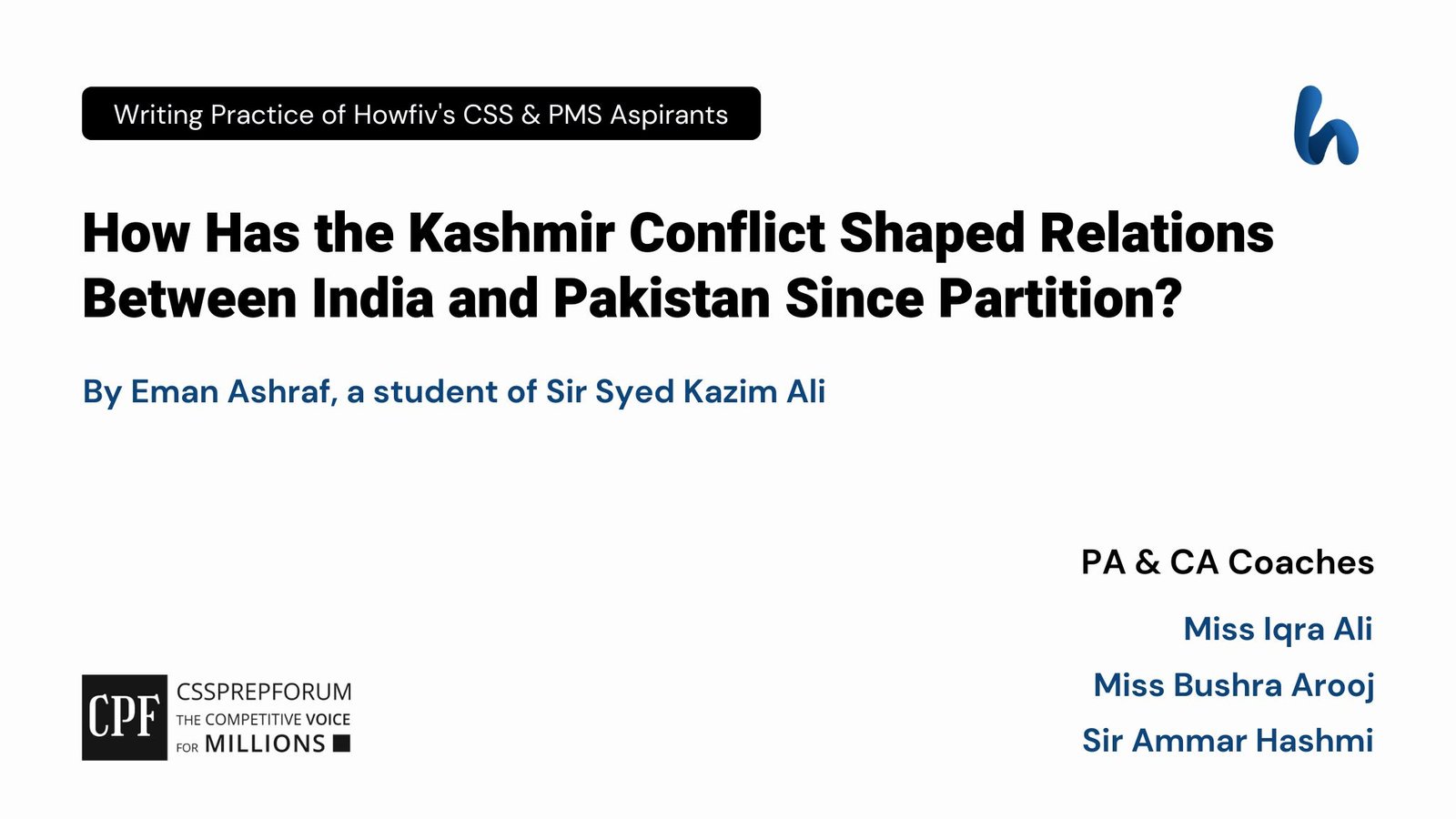CSS Solved Sociology Past Papers | Explain G.H. Mead’s concepts of mind, self, and society along with the basic principles of symbolic interactionism.
The following question of Sociology is attempted on the same pattern, taught by Sir to his students, scoring the highest marks in compulsory subjects for years. This solved past paper question is uploaded to help aspirants understand how to crack a topic or question, how to write relevantly, what coherence is, and how to include and connect ideas, opinions, and suggestions to score the maximum.

Question Breakdown
In this question, the examiner requires a brief account of G.H. Mead’s concept of mind, self, and society with the perspective of symbolic interactionism. He is a pragmatist and has a major contribution to the representation of the social aspects and the demeanour of an individual. He has elaborated on the human personality with the individualistic context to connote the fundamental framework of human society. Social interaction is the thematic essence of the question, which is the building block of mind, self, and society. Moreover, it is mandatory to explain the micro-concepts from the perspective of symbolic interaction to assess the interrelation deliberately.
Outline
1- Introduction
2- George Herbert Mead: Father of Social Behaviorism
3- Symbolic Interactionism: A Pilot Survey
4- G.H.Meads’ Conceptualization of Mind, Self, And Society
- ✓ Mind w.r.t. Symbolic Interactionism
- Primary socialization
- Articulation of I & ME
- ✓ Self w.r.t. symbolic interactionism
- Role of Socialization agents & Social institutions
- Stages of development of self
- Case studies of Anna, Isabella, Amala & Kamala
- ✓ Society w.r.t. symbolic interactionism
- Differential association perspective
- Labeling theory
- Social integration or deviance
5- Synthesis
6- Conclusion

Answer to the Question
Introduction
G.H. Mead has played a vital role in elaborating the social framework from a dynamic angle. He focused on the theme of society as sociability, which is the cause of the existence of the human race. Members of society interact, and such associations or collections of associations accomplish the common goals and shared values of the society. Owing to this stratagem, social institutions contribute as socialization agents by inducing the role-taking and response functions in society. This social schema is beneficial to interpret and percept the viewpoint of others in a society where the individual strives to behave as per the perceptions which are favourable and acceptable in the society. The response and interaction equation maintains the equilibrium of society significantly.
George Herbert Mead: Father of social behaviourism
- Background
| ORIGIN | 27 February 1863 South Hadley, Massachusetts, United States American sociologist |
| INFLUENCED | 20th century thinkers of west |
| INFLUENCED BY | William James, Friedrich Hegel, John Dewey |
| PUBLICATIONS | Mind, self, and society(1934)The social self |
| MAJOR CONTRIBUTIONS | Symbolic interactionism conceptualization of society |
George Herbert Mead was an American philosopher, sociologist, and psychologist. He was one of the distinguished pragmatists. He studied at Oberlin College and Harvard University and also remained associated with the University of Chicago during 1934. He attempted to notion the interdependence and interrelation of the human self and social interaction. Additionally, he gave an account of the impact of socialization on the mind and self that ultimately weaves a society. He deliberately focused on the living consciousness and the personality of the human being. Arguably, social interaction is the concept that defines a human as a human and is referred to as the concept of role-taking. The ideation of I and ME clearly describes Mead’s philosophy of symbolic interactionism through the empirical outlook. It provides insights into the microelements that architect society.
Symbolic interactionism: A pilot survey

- Proponents
- Robert K. MERTON
- G.H. MEAD
Symbolic interactionism implicates social interaction as a necessity for human society. It articulates social solidarity with the architecture of the individual self. The human self is not the outcome of internal stimuli but the external stimulus that compels the human self to enact the sanctioned social behaviour. A mind and self are the outburst of human socialization machination which is operated by the response and role-taking. Sequentially, society decides what is wrong and what is right to do i.e. the propagation of social positive sanctions and social negative sanctions. This scenario can be pivotal to social integration or deviance in society. Therefore, society is the total sum of the social interactions and shared values and goals ostensibly.
G.H. Mead’s Conceptualization of mind, self, and society
G.H. MEAD exclaims mind, self, and society as the components of the social process that evolves society categorically. He exclaimed that society is not the final stage but the initial stage to map out the Mind and the blueprint of the Self. Human personality is the outcome of social experiences. He argued that the Self could not be developed in isolation. Macionis: ‘Self is part of an individual’s personality composed of self-awareness and self-image’. Mead involves the exchange of a system of symbols. Macionis: ‘symbols are anything which carries a particular meaning recognized by people who share a culture’. Interpretation of meanings requires understanding the intention of someone involved in interaction which in turn requires understanding the situation or process by keeping ourselves in that particular situation.
For example, A student during a lecture session cracks an unnecessary joke. The teacher responds to his joke by showing a symbol of thumbs up. Other students can assess that it is not to exclaim appreciation. Rather, it denotes sarcasm on behalf of the teacher and embarrassment on behalf of the student as a result of this interaction.
- Mind with respect to symbolic interactionism
As per the conceptualization of Mead, Mind, Self, and Society is in reverse order, and minds arise the society. The born human turns into a personality by the sequence of the social process, i.e. body = mind= self = society. The primary stage of the human race, i.e. childhood, is illustrated as the blank slate stage by G.H. Mead. It has nothing imprinted and is the phase of cognitive development. Primary socialization agent like family is the first nursery that imparts interaction and builds the mental ability to imitate and enact social behaviours. This stage initiates with the concepts of I and Me. It is the individual importation of social processes. I am the individual identity, while ME is the response to social interaction. Language and communication are the supporting media for the exchange of interactive information. It incepts the equilibrium by the action and stimulus. For example, speech is a vocal gesture that generates a response by acting as a stimulus. Meads’ concept of mind is established by the consciousness of the mind via stimuli and impulse association. The response is the milestone based on interaction. An optimistic interaction results in a productive mind, self, and society, whereas extreme interactions like broken family or abusive family become the causative agent of delinquent traits and ultimately deviant society. The primary stage prepares the individual for role-taking and behaviourism in society, making a social web interconnected by institutions and interaction. Thus, the whole social process articulates with the augmentation of the mind that generates ideas and solutions. It makes an individual conscious of his/her surroundings. Meanwhile, the perception of I and ME remains functional in the structuralization of the self and society as the final product.

- Self with respect to symbolic interactionism
The self emerges from the socialization agents like peers, education, religion, politics, and economics. Each socialization agent has the specific goal to facilitate the social process by contributing to the scenario of role-taking and role-playing. These factors set the stage for interactions among the individual, and a complex of association plots the society as the goal orientation. Without socialization, a person cannot fully grasp their potential as a human being and develop his qualities. Through the instrument of socialization, individuals learn to channel emotions and behavioral responses. Keeping in view the significance of socialization, development of consciousness, and moral code, a self is prepared to be pivotal in the preservation of social values and norms by maintaining the social order. In addition, to that these agents have a vast role in the attainment of common goals and shared values of society. Secondary socialization by a group of individuals in society and Re-socialization imparts the learning leeway to percept the society by self. Similarly, Development Socialization focuses on the progression of the finesse of the individual and escalates the process of cognition. On that wise, a complex ecology of multiple institutions, agents, and roles structuralizes the interactive society.
Mead considers the development of self in four stages
- Imitation of the social behaviours around the individual
- Role-playing to understand the viewpoints of others
- A game that helps to understand the roles of a few people in one specific situation
- Understanding of multiple roles in multiple situations that depicts the practice of values, norms, and belief systems.
In this regard, interaction has the core significance for the up thrive of human beings. Aristotle: ‘Man is a social animal. He who lives without society is either beast or God’. Interestingly, this human trait indicates the function of sociability. Some of the cases that depict the disruptive self and mind due to a dearth of social interaction which is the prerequisite for the optimistic social process, are as follows:
- CASE OF ANNA:
Anna was an American child who was detained in a room at the age of six months in 1934. She lacked social interaction for five years and was discovered in 1938. It was found that she was unable to talk or walk and was unresponsive in the presence of people - CASE OF AMALA & KAMALA:
In 1920, Amala and Kamala were found in a wolf’s den in India. Amala died soon after the discovery while Kamala survived till 1929. It was found that she used to walk on four legs and growled like a wolf - CASE OF ISABELLA:
The case of Isabella is similar to Anna. She lacked social interaction for six years and, when found, was unable to talk, walk and interact with people.
- Society with respect to symbolic interactionism
Self is born of a society.
Mead
The total outcome of social interactions and associations in society. With the lens of symbolic interactions, society is a complex structure encompassing multifaceted demeanours and roles. The symbolic interactionism context notions society to enunciate the social positive sanctions and social negative sanctions, which gives the account of Do’s AND DON’T’S.
Differential Association Theory
Differential association theory gives a quick fix to the arising query of how societies come to view certain behaviour as deviant. The approach embroils the answer that Individuals learn deviant behaviour from the close ones who provide the opportunities and modes for deviance. Most probably, the social institutions and social agents are functional in this mechanization
For example:
A teenager whose friend breaks the law is more likely to break the law and indulge in unlawful activities like drug addiction and crimes like murder, robbery, and rape. Juvenile delinquency cases, in this regard, are a blatant instance. Similarly, smoking and gossiping are the impacts of differential association phenomena.
Case study of social media influence in Pakistan
Nowadays, social media has clenched the whole globe stringently and has erupted as part and parcel of human life. Social media influence has a deep impact on the diurnal routine as people follow the media influencers and mould their lives according to the incarnation of social media influencers. Regardless of the pros and cons of the social media effect, human lives have been entangled in the trap of consumerism to win the race for the best lifestyle. On that wise, social interactions have boosted the speed of capitalism not only in Pakistan but also at the global level. Meanwhile, the inadequate resources and high demands to fulfil unnecessary needs, crime deviation is perpetuating rampantly due to the expansive spectrum of social inequalities. Meme culture is one of the offshoots in this plot which has a deep impact via virtual interaction on the innovative temperament of the whole Pakistani society.
Labelling Theory
Labelling theory examines the ascribing of deviant behaviour to another person by members of society. An individual measures or contrast his/her actions as per the reaction of others in society. COOLEY called this schema ‘looking glass self’. It proposes what is considered deviant is determined not so much by the behaviors themselves or the people who commit them but by the reactions of others.
For example
Adultery, homosexuality.
In the same manner, Social problems may have a general definition but constitute a social problem that may vary from society to society based on people’s shared definitions. Individuals learn their perceptions of a social problem from other people.
For instance:
Divorce and polyandry are regarded as (taboo) bad things in eastern culture either to discuss or to practice while across the globe, several cultures practice these customs without any hesitation. The same is the case with Gender stereotyping. Owing to this discourse, social integration is attained by common consciousness while a certain disruption may erupt anomaly in the society like crime deviation by deviant behaviour. Quintessentially, social integration and deviance are orchestrated by societal norms and values.
Synthesis
G.H. Mead has proposed a machination to study the social process in the context of symbolic interactionism that implicates the deliberate examination of mind, self, and society. He elucidated the definition of sociability by throwing light on the role of interaction in society. He illustrated that human society has to be perceived in reverse order: society, self, and mind because the socializing agents and social institutions are behind the functionalization and emergence of self and mind. Along the same vein, he correlated the mind and biological factors like the nervous system. Similarly, the self is the product of interaction which is the device to drive the vehicle of human association and social equilibrium. Society is thus the total sum of multiple roles and multiple functions with a wide array of role-taking and role-playing.
Conclusion
The idea of the matter is that the conscious study of mind, self, and society by G.H. Mead gives a brief account of the individual and collective factors of the social process. Mind is the individual importation of the social process that is refined by primary socialization. Self further undergoes the process of socialization by the socializing agents through several stages to internalize the multifaceted role-playing and understanding of the complex framework driven by the social institutions. Society in this matter is a humongous ecology of interaction that articulates social integration or deviance based on social interaction. Therefore, the culmination point of the social process is collective consciousness after
CSS Solved Past Papers’ Essays
Looking for the last ten years of CSS and PMS Solved Essays and want to know how Sir Kazim’s students write and score the highest marks in the essays’ papers? Then, click on the CSS Solved Essays to start reading them.
CSS Solved Essays

CSS Solved General Science & Ability Past Papers
Want to read the last ten years’ General Science & Ability Solved Past Papers to learn how to attempt them and to score high? Let’s click on the link below to read them all freely. All past papers have been solved by Miss Iqra Ali & Dr Nishat Baloch, Pakistan’s top CSS GSA coach having the highest score of their students.
General Science & Ability Solved Past Papers
CSS Solved Pakistan Affairs Past Papers
Want to read CSS Pakistan Affairs Solved Past Papers and learn how to attempt them to score high? Let’s click on the link below to read them all freely. All past papers’ questions have been attempted by Sir Kazim’s students, who scored the highest in the subject.
CSS Solved Pakistan Affairs
CSS Solved International Relations’ Past Papers
Have you opted for International Relations in the CSS examination and want to score above 150? Then, click on the CSS Solved International Relations’ Past Papers by Miss Abeera Fatima, the top IR scorer and the best IR coach in Pakistan.
CSS Solved International Relations Past Papers
Articles Might Interest You!
The following are some of the most important articles for CSS and PMS aspirants. Click on any to start reading.












